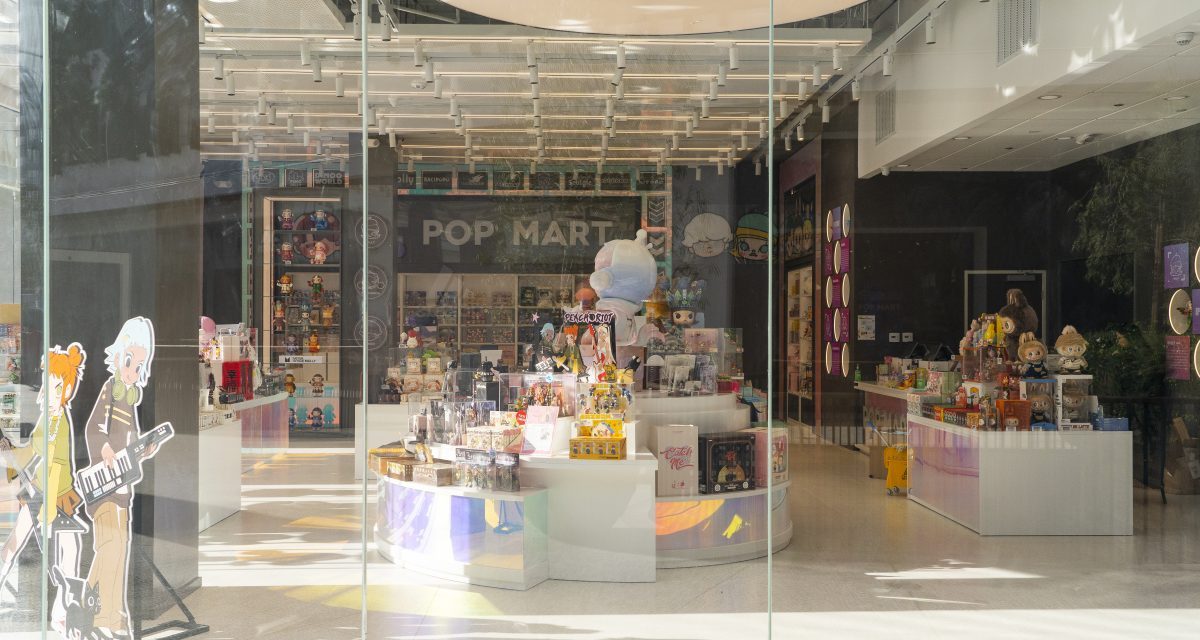Inside Chinese toy company Pop Mart’s U.S. expansion plans

Pop Mart is planning to bring its designer toys into more areas of the U.S.
The Chinese toy and entertainment brand, which is known for its original collectible figurines, was founded in 2010. It currently has seven stores in the U.S., two of which opened in Los Angeles malls this month. Pop Mart has a total of 450 stores in 30 countries. The company has plans to open more stores in cities like Las Vegas and San Diego, among other areas in the country, though the opening dates aren’t yet set in stone.
Luis Barrientos, executive vice president of real estate for Pop Mart, said that the U.S. is Pop Mart’s target market for global growth. He added that the company is well-positioned to open up to 200 stores in the country. Its overseas expansion is a major part of the company’s revenue growth plan. For the six months ended June 2023, about 13% of its total revenue came from overseas regions and the rest came from mainland China.
“We can comfortably get to about 200 stores in the U.S., and whether that’s going to take five or 10 years, we don’t know at this point,” Barrientos said. “We’ll continue to evaluate as we go and really gauge based on what the customer response is. We certainly believe that the density in the U.S. will support these 200 stores.”
Pop Mart is headquartered in Beijing, China and was listed on the Hong Kong Stock Exchange in 2020. The company sells small figurines that cost anywhere from $16 to well over $1,000. The company develops original series like Molly, Skullpanda and Dimoo, and it also partners with popular franchises like Mickey Mouse and Harry Potter. In the first half of 2023, it had a revenue of $385 million, a 19% growth from the previous year.
Barrientos said that Pop Mart was particularly drawn to the size of the U.S. economy. Pop Mart opened its first store in the U.S. in 2022, and has been plotting more physical stores since. The company is particularly drawn to traditional regional malls that are located in large retail markets. The size of its stores vary from about 500 square feet to about 5,000 square feet. Next to some of its stores, Pop Mart has high-tech vending machines, called Robo Shops, that disperse blind boxes.
Its stores typically have an elaborate display of popular palm-sized items as well as its large figurines, which can be nearly 30 inches tall. Events like artist signings are also held in the store. For example, Pop Mart invited Libby Frame, the creator of its Peach Riot Series, to show up for the grand opening of its Century City store.
“A lot of the brand building also has to do with us just having a top-notch store display and presentation,” Barrientos said. “That’s naturally going to capture customers as they walk by versus relying on any type of external media outlets for customers to find us.”
Still, the company is steadily growing its global following online. The company has over 700,000 followers on TikTok and over 300,000 followers on Instagram. In the U.S., Pop Mart has been showcasing its products and hosting activations at several conventions, such as DesignerCon, ComplexCon, San Diego Comic Con, and AnimeExpo.
Some of its IPs are particularly popular in specific markets. For example, Pino Jelly has a strong fan base in South Korea and Crybaby is popular in Thailand. In 2020, Pop Mart had sold over 50 million toys.
The U.S. is a large market with a very diverse consumer demographic, said Lauren Beitelspacher, associate professor in marketing at Babson College, which is appealing to international brands looking for growth in new markets. Foreign brands are particularly drawn to opening their own stores in the U.S. because it allows them to gather more data on shoppers and stay in control with the way the brand is presented to people, she said.
However, breaking into the U.S. market is not an easy task. Even large retailers like Tesco have famously failed to successfully enter the U.S. “It’s a very messy competitive marketplace,” Beitelspacher said. For foreign brands, it could be hard to “cut through the noise and make people aware that you exist.”
While Pop Mart has big plans to open more locations in the U.S., Barrientos said the company doesn’t have a set date on when its next store will open.
“We’ve found great early success in the U.S. market and have been really encouraged by the customer response and performance at this point,” Barrientos said. “We’ve got a long way to go as far as meeting customer demand and opportunity but it’s one of the biggest focuses of the company.”
Correction: This story originally said that Pop Mart opened its first U.S. store in 2020. Barrientos said that he misspoke, and that Pop Mart actually opened its first U.S. store in 2022.

